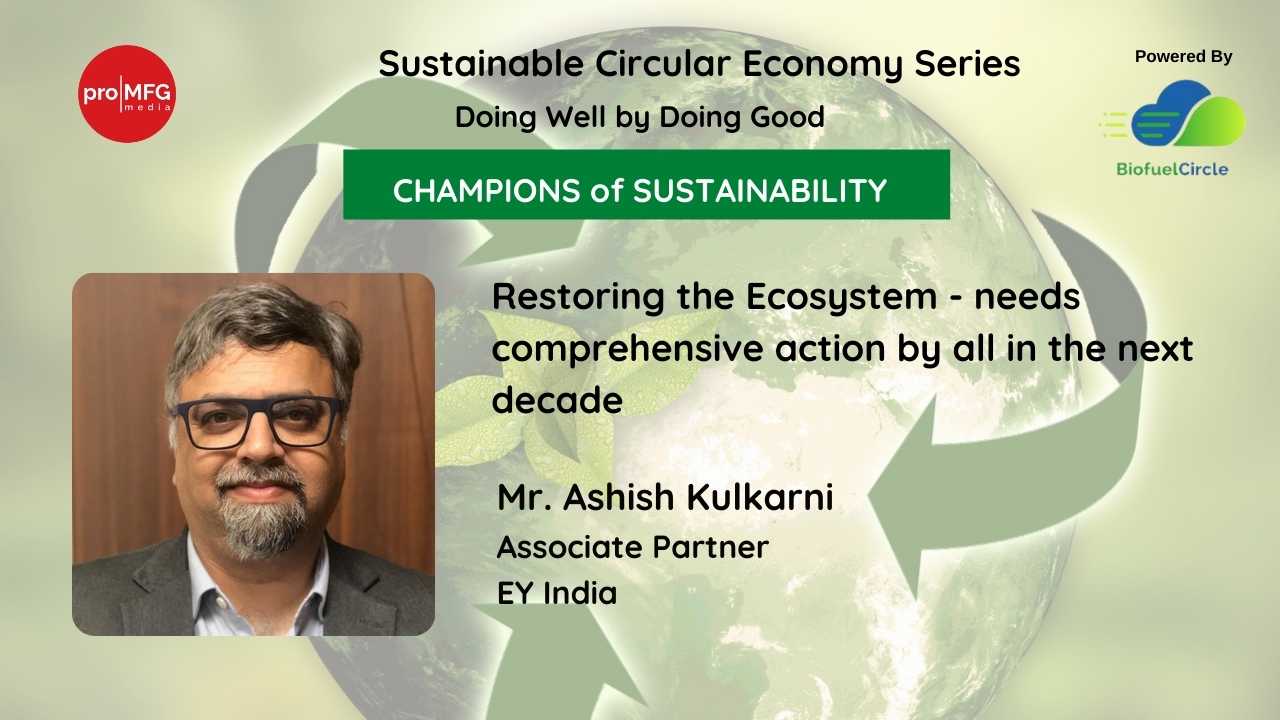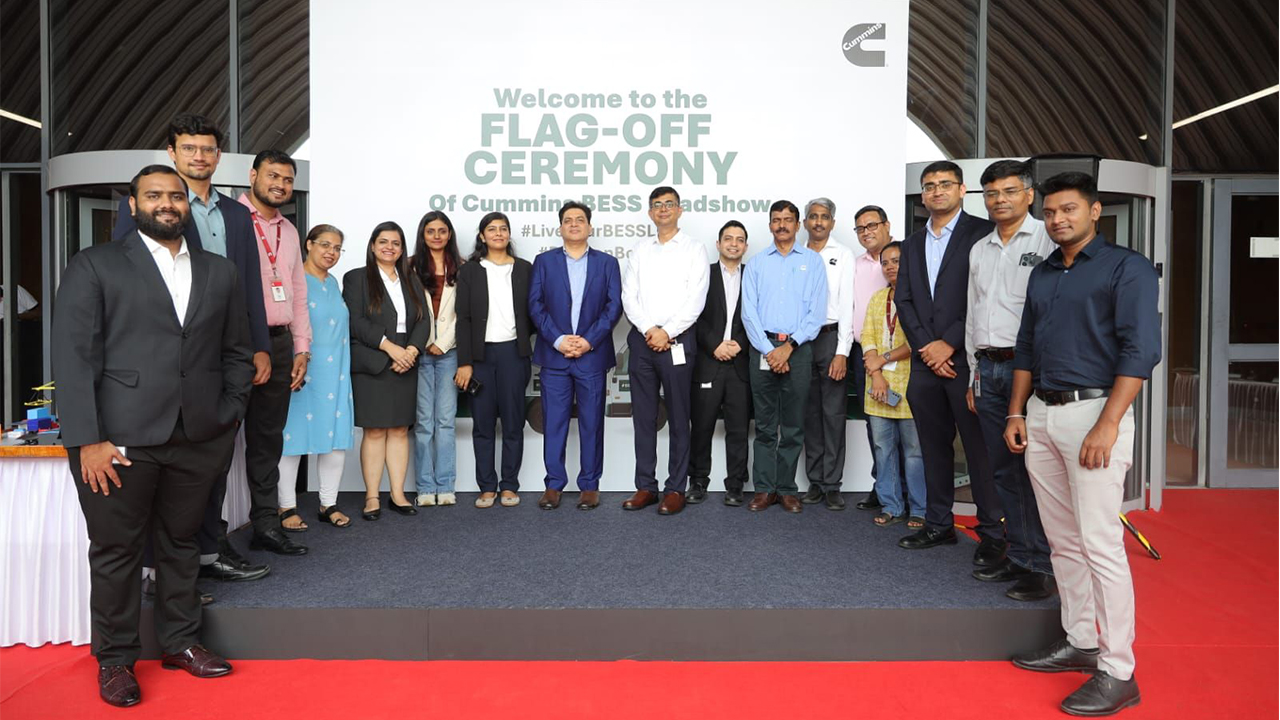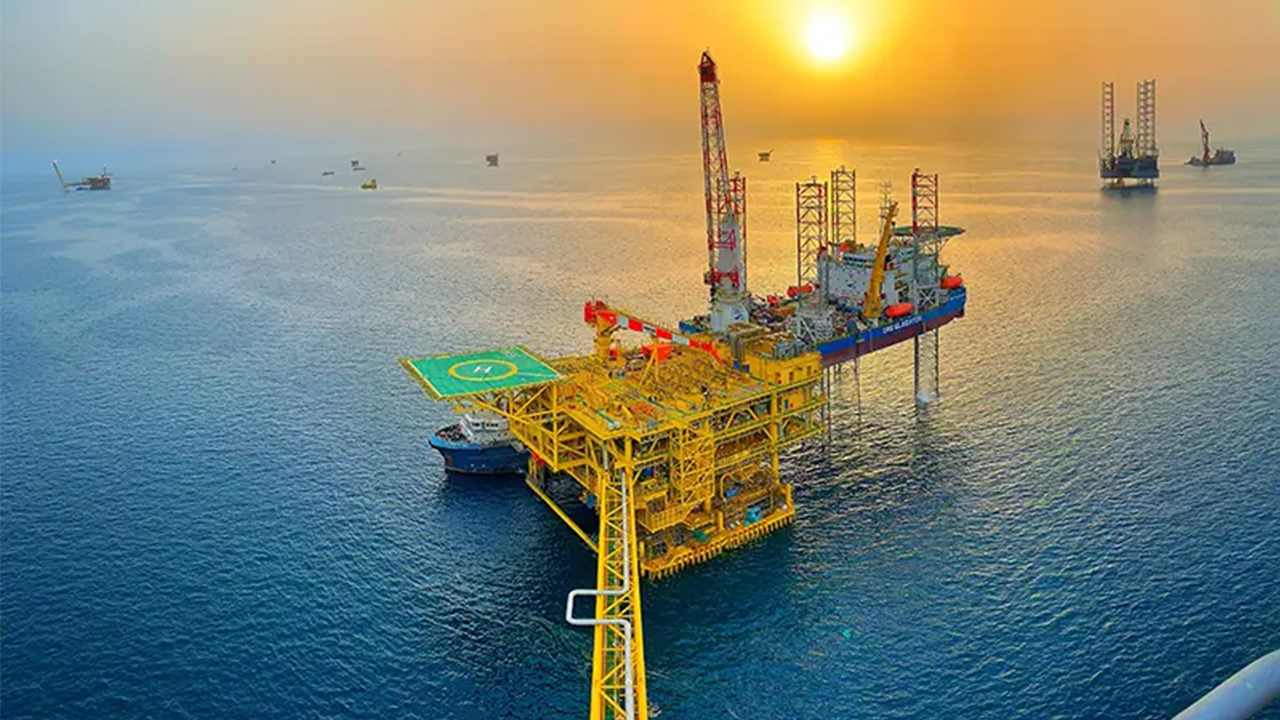Restoring the Ecosystem - needs comprehensive action by all in the next decade
#Sustainability #EcosystemRestoration #EY #Environment #ClimateChangeAs part of the Pro MFG Sustainable Circular Economy Series – Doing Well by Doing Good, powered by BiofuelCircle, Mr. Ashish Kulkarni, Associate Partner, EY shares views on Ecosystem Restoration, Decarbonization, Climate Finance and more.

Approximately about fifteen years back, I stopped using a separate shaving lotion/cream. It just doesn’t exist in my kit because a normal bath soap does give the same results. Microplastic related pollution was avoided, and so were the emissions while producing the product. However small, I made a change that was good for the environment. Over the years I have only become more aware and try to be a minimalistic in my approach. This is just one example. Why am I writing about it? Every single action of ours goes a long way in saving the environment.
The theme for this year’s World Environment Day is ‘Ecosystem Restoration’. The UN will embark on a decade long journey of ecosystem restoration. During this decade, it would require a mammoth campaign by all to restore our mother earth’s ecosystem starting with ourselves.
I would like to highlight what each one of us as equal stakeholders in today’s context could do to enable this campaign and make it a huge success.
As an individual/community – The pandemic has taught us quite directly, more so, in the last one and half years, what we as humans could not learn in past decades and centuries. Minimalism. When we look back at the last one and half years, we indeed need less. Yet we acquire way more. Consume more. Yes. It helps the environment to be a minimalistic. Optimum usage of soaps, water, electricity, fuel (transport), food, water also leads to monetary savings for a happier life apart from helping restore the environment. Maybe we could use these monetary savings for travelling and seeing the world. In addition, by using lesser cosmetics/soaps/creams we save our oceans. Entrepreneurs on the other hand, could really use to time to build greener/cleaner products, supply chains and materials.
As a corporate/commercial establishment – Go for carbon neutrality, procure green energy, electrify the fleets, save electricity and water, reduce indoor air pollution, go for green buildings for your offices. This will surely add to overall profitability by reducing operational costs. On January 1st this year, (the start date for implementing Nationally Determined Contribution (NDC’s) as per the Paris Agreement), we surely felt proud to see 25 large Indian conglomerates taking a pledge to take science-based targets to reduce emissions, that would aid to achieving the nation’s NDC’s.
As an industry – Decarbonize to the extent possible. Adapt Hydrogen and Carbon Capture, Utilization and Storage as much as possible. We now have incentives lined up for pilots through national Hydrogen Mission along with PLI schemes under “Atmanirbhar Bharat” both for advanced cell chemistry and solar cell and module manufacturing. Industrial symbiosis and circularity also provide for huge opportunities for efficient and profitable production As an urban local body – Go low carbon – buildings, transport, green infrastructure, green energy for utilities and government buildings, more rooftop solar and increasing more forest covers.
As rural bodies – Go green with solar based irrigation, more gas-based cooking saving on biomass and organic farming saving on fertilizers and reduce water through step farming practices wherever possible. Floating solar installations are possible in ponds and lakes wherever present.
As state climate change centres/departments – Redesign-development of climate resilient plans, disaster risk plans and implementation of state action plan for climate change, monitoring and evaluation of progress definitely needs to be taken into consideration and those lagging need to be incentivized/supported to do more.
As central institutions – Aid for more green energy, energy efficiency, increasing forest cover, promote innovations, fast track new power markets developments with sufficient policy and regulatory support, review and document all the positive actions for climate and environment under various incentive mechanisms, specialized tariffs, review running schemes like PAT and REC and to look all these centrally in a consolidated way.
Also, at the centre, a need to document and monitor all climate and environment related actions, of all the above right from individual to country level action is imminent. The Government of India has recently constituted a high-level inter-ministerial “Apex committee for Implementation of Paris Agreement” (AIPA) under the chairmanship of Secretary, Ministry of Environment, Forests and Climate Change and this is the first great step towards coordinated governance and hopefully all the above actions will be consolidated by the Apex body.
The "Report of the Sub-Committee for the Assessment of the Financial Requirements for Implementing India’s Nationally Determined Contribution (NDC)" published by Ministry of Finance in June 2020, states that for meeting all of climate actions, including the NDC’s, India would need USD 2.5 billion in climate finance. Climate finance is indeed the most important pillar for us to achieving NDC's, fighting climate change and ecosystem restoration. This really needs to be looked in further depth. The gaps however, on how much budget we as a nation have, from all sources (internal and external), and what is needed, are increasing by the day with the economy and GDP taking a hit because of COVID-19. We need to strategically and centrally devise a climate finance strategy on addressing the gaping gaps. Institutions like The Green Climate Fund need to be tapped into but with a holistic and more comprehensive proposal and not in disintegrated fashion (that may be funded) and with lesser impact. Climate actions as others need to be integrated, aggregated to bring in more efficiencies in financing and leveraging to do more from the same amount, again both in mitigation and adaptation.
The environment is screaming ‘It’s all about balance’ and in balance we all win... in fact, more accurately put ‘we survive’.
Ashish Kulkarni is an Associate Partner with EY, leading the Climate Change and New Energies practice in India. He has about two decades of experience in the climate change mitigation and adaptation sectors across low carbon growth strategies/technologies including green hydrogen, e-mobility, air quality, sustainable urban cities, product design & evaluation and policy/regulatory issues. Ashish has also originated, developed and implemented renewable energy projects. Ashish co-leads Green Climate Fund (GCF) account at EY and has been spearheading all climate finance projects and initiatives in the organization. His strong involvement with NDCs across various countries and carbon markets renders him a seasoned specialist in the domain.
Views expressed by the author are personal.
NEWSLETTER
TRENDING ON PRO MFG
MORE FROM THE SECTION









